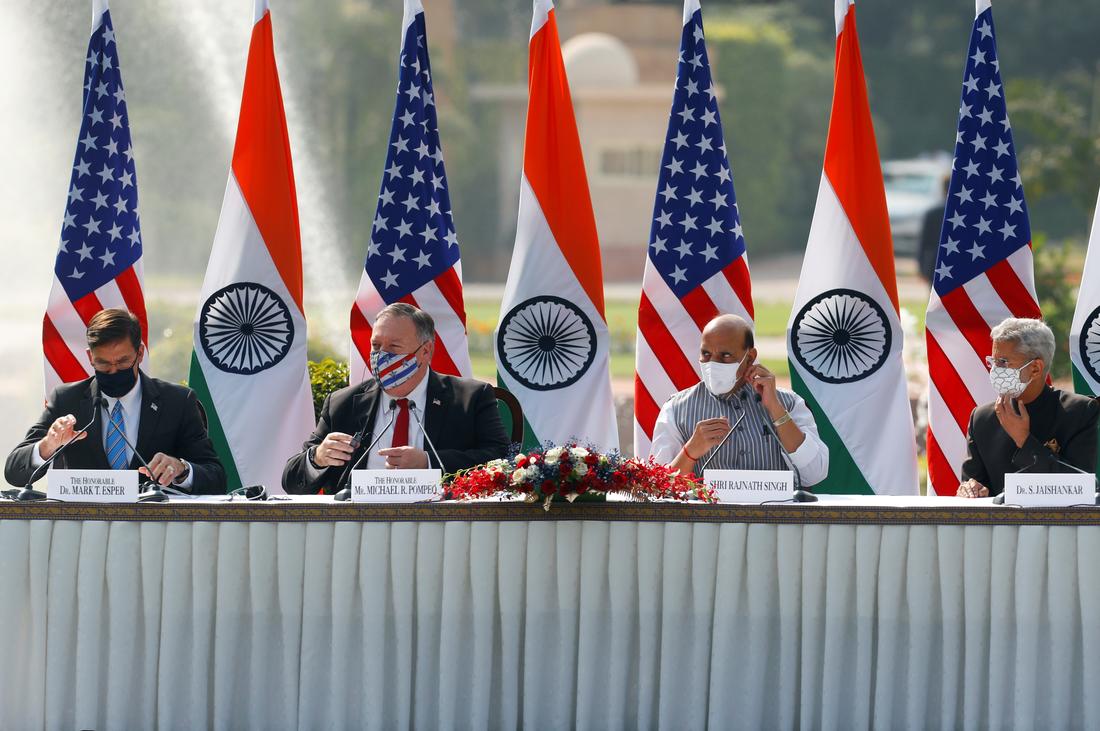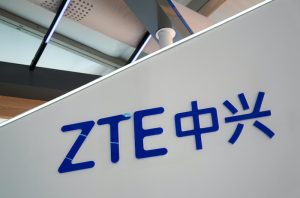(ATF) The long-awaited Basic Exchange and Cooperation Agreement, that is expected to make Indian missiles deadlier and build closer ties between India and the US amid ongoing conflict with China, was finally signed today by senior officials from both countries.
The landmark pact will provide India access to high-end military technology, logistics and extremely accurate geospatial maps. This has major implications and is likely to give Indian missiles a killer edge.
The deal was signed as External Affairs Minister S Jaishankar and Defence Minister Rajnath Singh held the third edition of the 2+2 talks with US Secretary of State Mike Pompeo and Defence Secretary Mark Esper, in New Delhi on Tuesday.
A term coined by foreign diplomacy, the 2+2 talks refers to a ministerial-level dialogue between the two countries’ defence and external affairs ministries.
Signed in the backdrop of China’s continuing aggression on the Ladakh frontier, the deal marks an important moment in bilateral relations between India and US, experts say.
And it is landmark, because, according to Defence Secretary Mark Esper, the pact reflects the growing defence and security partnership between India and the US to keep a check on the situation in the Indo-Pacific at a time when China is attempting to expand its economic and military clout in the region.
READ MORE: Border conflict highlights the urgent need for Modi to do more
The sensitive satellite and sensor data provided by the US under the agreement will also allow India to keep a close watch on the movements of Chinese warships in the Indian Ocean.
“Our leaders and citizens see with increasing clarity that Chinese Communist Party (CCP) is no friend to democracy, rule of law, transparency… I’m glad to say India and US are taking all steps to strengthen cooperation against all threats and not just those posed by the CCP,” Secretary of State Pompeo said in a media conference right after signing the deal.
Tense relations with China
Like India, the US has also been crossing swords with China lately.
Washington has been fighting a tense trade battle with Beijing for many months even as President Donald Trump’s administration stepped up warnings about Beijing’s growing economic and military power in recent times.
And last week, the US antagonised the People’s Republic by approving the potential sale of $2.4-billion worth of missile systems for Taiwan, which has a desperate need for more modern military equipment given the relentless threats and pressure that Beijing has put the island under in recent years.
India has traditionally been hesitant about getting drawn into a US-led security alliance and antagonising China. But tensions rose dramatically this summer and erupted after a deadly clash between border troops in a part of the isolated Galwan Valley.
At least 20 Indian soldiers were killed in the clash. China has acknowledged that it also suffered casualties but has not provided details.
Both sides have since sent tens of thousands of troops to their disputed frontier in the Ladakh region and are digging in for a long, hard winter in the freezing high-altitude region.
Clearly, stronger security ties is the need of the hour for the two largest democracies to help balance China’s growing regional influence.
READ MORE: Border conflict highlights the need for Modi to do more
Having sold India more than $21 billion of weapons since 2007, Washington has also been urging the Indian government to sign agreements allowing for sharing of sensitive information and encrypted communications for better use of high-end military equipment.
The Basic Exchange and Cooperation Agreement will allow robust intelligence sharing between US and India, particularly about Chinese activity in the region, such as deployments of the People’s Liberation Army on the Indian border and China’s maritime activities, including its deepwater fishing fleets, which have caused friction with many other countries in recent years.
Rajnath Singh, India’s defence minister, said: “We are happy that we’ve completed the Basic Exchange and Cooperation Agreement, which will open new avenues in information sharing. We are eager to discuss further issues with US.”
Sharpening the Quad’s edge
The Agreement also lends a new momentum to the evolution of a concrete formal security arrangement called Quad. And this was reflected in a statement by Mark Esper:
“This year marks the 15th anniversary of the first US-India Defense Framework and our third 2+2 Ministerial. We have strengthened our defense and security partnership considerably since then, especially over the past year, during which we advanced our regional security, military-to-military, and information-sharing cooperation. Our focus now must be on institutionalizing and regularizing our cooperation to meet the challenges of the day and uphold the principles of a free and open Indo-Pacific well into the future.”
The Quad is a loose strategic coalition of the Indo-Pacific region’s four leading democracies – Australia, India, Japan and the US. It was formed in response to China’s aggressive foreign policy, which has been most notable in the South China Sea.
These four allies are now working toward establishing a new multilateral security structure to create, what experts have often called, an Asian version of NATO with a longer arm.
Aside from developing a close security partnership, the Quad also intends to share values and interests, including the rule of law, freedom of navigation, respect for territorial integrity and sovereignty, peaceful dispute resolution, free markets, and free trade, analysts have said.
























